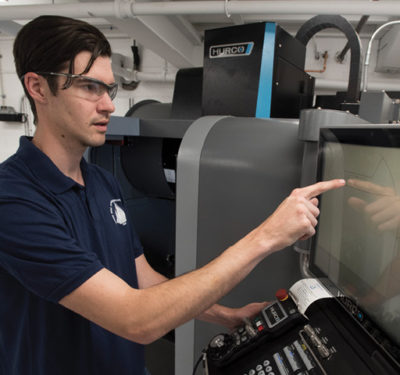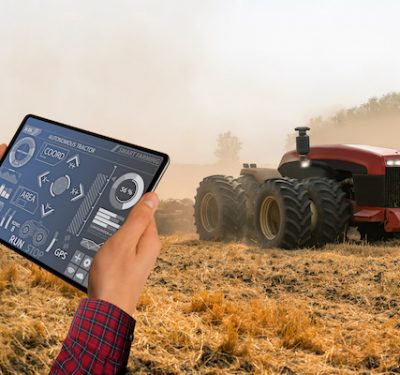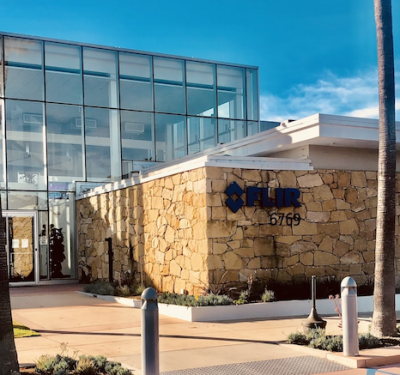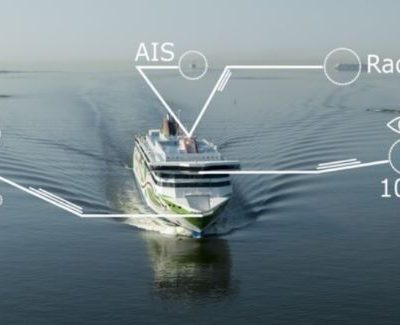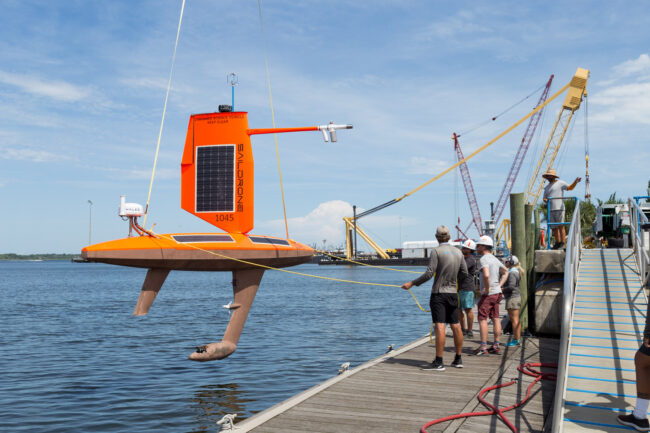
CHARLESTON—Saildrone, the world’s leading provider of ocean data using uncrewed surface vehicles (USVs), announced the redeployment of its famous Saildrone Explorer SD 1045 for the 2023 Atlantic hurricane season, in partnership with the National Oceanic and Atmospheric Administration (NOAA).
This remarkable USV made global headlines in 2021 for capturing the first video from inside a major hurricane at sea. The data collected by SD 1045 provided invaluable insights into the dynamics and intensity of these powerful storms.
SD 1045 is one of 12 deployed this summer; it was deployed from Charleston over the weekend and will be stationed off the coast of South Carolina for the duration of the mission.
“Off the coast of South Carolina is a particularly complex area of the ocean with relatively shallow waters combined with the strong, warm currents of the Gulf Stream that supply energy to a storm. When hurricanes go over these warm waters, they often intensify, potentially right before they make landfall, so it’s really important to understand how the ocean interacts with the storms in this area,” said Greg Foltz, a NOAA oceanographer and one of the mission’s principal investigators.
Battling massive waves and winds over 100 miles per hour, SD 1045 not only survived Hurricane Sam intact but collected important data about the physical interactions between the ocean and atmosphere that revealed new insights about hurricane intensification. Typically, strong winds mix up colder water from below, cooling the ocean and limiting the heat energy that intensifies a storm. However, the real-time data from SD 1045 revealed that the ocean wasn’t cooling. Fresh water, likely emanating from the Amazon river, may have been keeping the surface of the ocean warm, fueling the hurricane.
“SD 1045 sailing through the eye of Hurricane Sam was really a seminal moment for this field campaign with NOAA, proving that we could sail into a major hurricane and deliver data in near real time to scientists working to improve hurricane forecasting. To redeploy SD 1045 this year for the same mission further demonstrates the endurance, durability, and reliability of the Saildrone platform,” said Matt Womble, senior director of Ocean Data Programs.
Hurricane track forecasting has steadily improved in recent years. However, predicting rapid intensification—when wind speeds increase at least 35 mph over a 24-hour period—is still a significant challenge. The Atlantic Hurricane mission aims to improve understanding of why some tropical storms rapidly intensify.
With its mission to collect data and capture video footage, this cutting-edge USV will be at the forefront of studying hurricanes during the 2023 season. The Saildrone fleet will transmit metocean data, including air temperature and relative humidity, barometric pressure, wind speed and direction, water temperature and salinity, sea surface temperature, and wave height and period to scientists at NOAA’s Atlantic Oceanographic & Meteorological Laboratory and Pacific Marine Environmental Laboratory.


